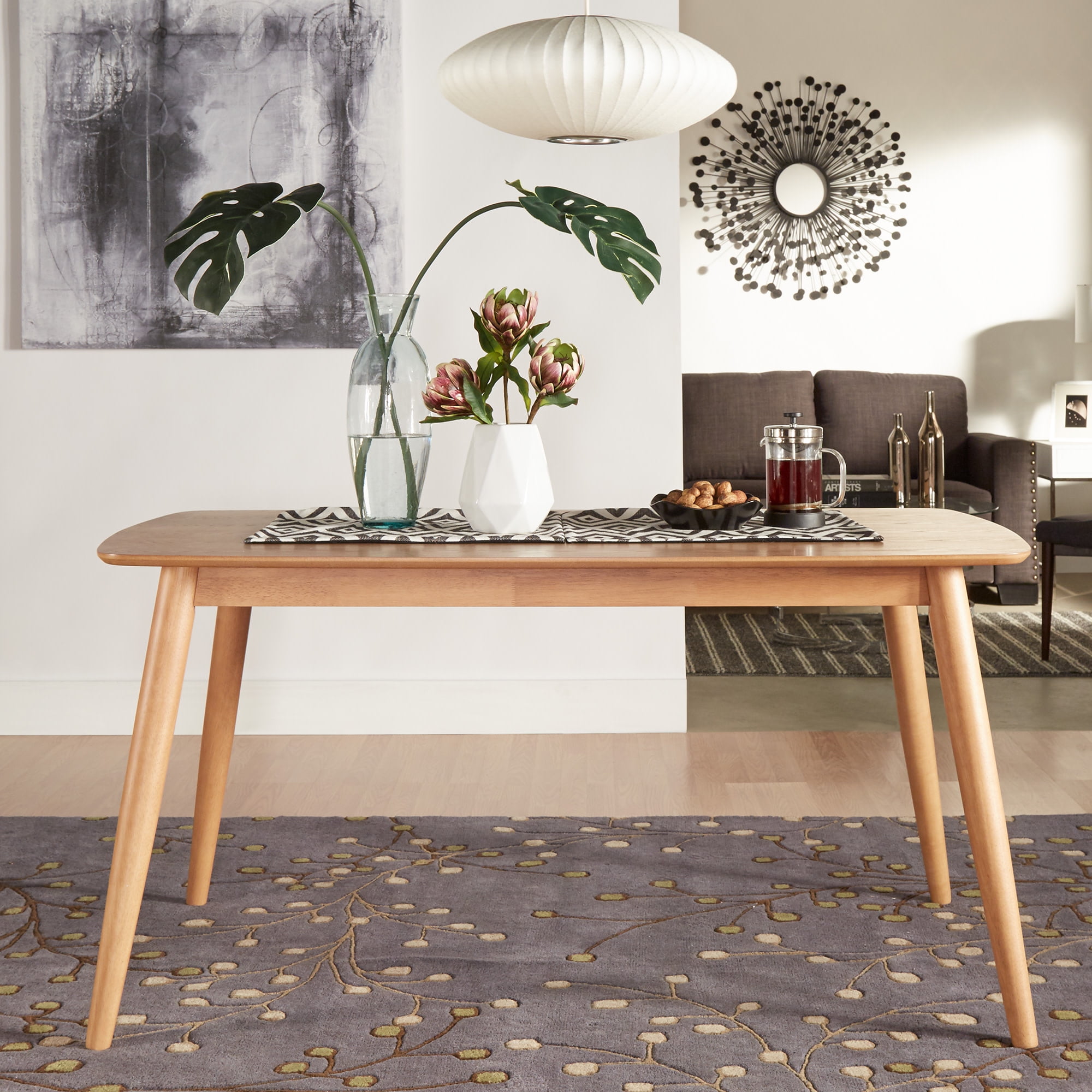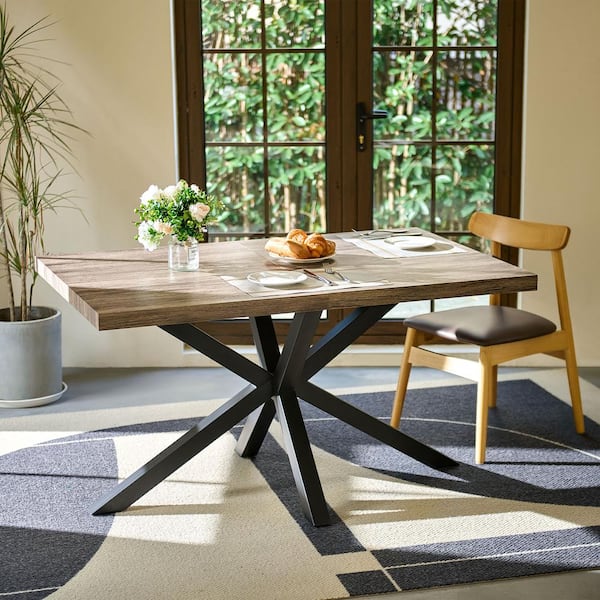Redefine Your Table's Allure with Gorgeous Dining Table Legs Wood Designs
Redefine Your Table's Allure with Gorgeous Dining Table Legs Wood Designs
Blog Article
Essential Factors To Consider for Choosing the Right Eating Table Legs Wood
Choosing the proper wood for eating table legs entails a nuanced understanding of numerous variables that affect both capability and visual allure. The option of timber kind, varying from robust woods to extra fragile softwoods, plays a critical role in guaranteeing sturdiness and stability. Each of these aspects can substantially affect the overall experience of your dining space.
Relevance of Wood Type

Hardwoods, such as walnut, maple, and oak, are frequently chosen for their stamina and resistance to use. These sorts of wood provide a robust structure that can withstand daily usage, making them ideal for eating tables that experience constant celebrations. On the other hand, softer woods like yearn may be more susceptible to dents and scrapes, which may not be optimal for high-traffic areas.
Moreover, the choice of timber can additionally affect the ease of maintenance. Some timbers need routine oiling or sealing to maintain their look, while others might be more flexible. Ultimately, picking the proper timber type includes stabilizing visual considerations with functional needs, guaranteeing that the table legs not just look attractive but additionally stand the examination of time.
Evaluating Stability and Stamina
When assessing eating table legs, one need to think about the security and stamina they provide to the total structure. The legs are critical in sustaining the tabletop and making sure the dining experience is secure and pleasurable. A stable table is necessary for avoiding tottering or tipping, which can cause spills or accidents throughout meals.
The option of timber type dramatically affects toughness. Hardwoods such as maple, walnut, and oak are generally extra sturdy and robust than softwoods like want or fir. Additionally, the thickness and style of the legs play an essential function; thicker legs or those with a conical design can provide far better assistance and stability.

Visual Considerations
While performance is critical, the visual appeal of eating table legs can not be forgotten, as they substantially affect the overall style and setting of the eating space. The option of wood, style, and coating can take away or enhance from the table's visual effect.

Surfaces also play an important duty in aesthetic appeals. An all-natural finish can highlight the wood's inherent beauty, while painted or tarnished legs can present color and character right into the space. The proportion and scale of the legs family member to the table top and surrounding furniture should be thought about to make certain aesthetic equilibrium and cohesion.
Eventually, the table legs must not just offer a useful objective but also add to a cohesive and inviting environment, making them a crucial factor to consider in the general layout of the eating location.
Upkeep Demands
To make sure durability and maintain the charm of wooden dining table legs, normal maintenance is my link necessary (Dining Table Legs Wood). Timber is an all-natural product that can be susceptible to harm from dampness, warmth, and put on. Establishing a routine care plan will substantially improve the toughness of your eating table legs.
Begin with routine dusting making use of a soft, lint-free towel to eliminate dirt and debris that can damage the surface area. For more comprehensive cleansing, make use of a moderate soap service and damp cloth, staying clear of excess wetness that could seep right into the wood. It is advisable to use a high-grade timber polish or conditioner every couple of months to nourish the wood and keep its radiance.
Additionally, take into consideration the atmosphere where the table why not try here is placed. Stay clear of direct sunshine, as it can trigger fading, and use rollercoasters or placemats to shield the surface from warmth and wetness. Address any kind of scratches or damages immediately with suitable timber filler or touch-up pens to avoid more degeneration. By sticking to these maintenance needs, you will not just preserve the visual appeal of your wood eating table legs however additionally extend their useful lifespan.
Spending Plan and Price Factors
Budget plan and expense aspects regularly play an essential function in the decision-making process for choosing wood table legs. When assessing options, it is necessary to develop a clear spending plan that aligns with your general furniture investment. The expense of wooden table legs can vary considerably based on the kind of layout, workmanship, and timber complexity.
Hardwoods such as walnut, cherry, and oak normally regulate higher prices as a result of their durability and visual charm. In contrast, softer woods like pine might be a lot more cost effective however may not offer the very same long life. Furthermore, customized or artisan-crafted legs can incur added expenses, reflecting the ability and time invested in their creation.
It is additionally crucial to consider the possible lasting value of your financial investment. While going with lower-cost materials could seem financially sensible initially, they might need even more regular replacement or repair services, ultimately raising general expense.
As a result, balancing high quality and cost is crucial. Prioritize products that meet your visual preferences while guaranteeing they fit comfortably within your spending plan, allowing you to produce a dining area that is both useful and visually appealing.
Final Thought
In verdict, selecting the proper wood for dining table legs demands careful consideration of numerous factors, consisting of timber type, stability, visual appeals, upkeep, and budget plan. Woods such as oak and walnut offer remarkable durability and stamina, while layout and density add to general security. Visual allure and maintenance demands need to straighten with individual preferences and way of life. Eventually, an educated choice will certainly improve the durability and visual appeal of the dining table, ensuring satisfaction and functionality for several years to come.
Picking the appropriate kind of timber for eating table legs is vital for both visual charm and structural integrity. Ultimately, picking the ideal timber type includes balancing visual factors to consider with functional demands, making sure that the dining table legs not only look enticing however likewise stand the test of time.
It is advisable to use a top notch wood polish or conditioner every couple of months to nourish the wood and keep its appeal.
The expense of wooden eating table legs can vary significantly based on the kind of design, timber, and craftsmanship complexity.
In conclusion, picking the suitable timber for dining table legs necessitates read review cautious consideration of numerous elements, consisting of wood kind, security, visual appeals, upkeep, and budget plan.
Report this page